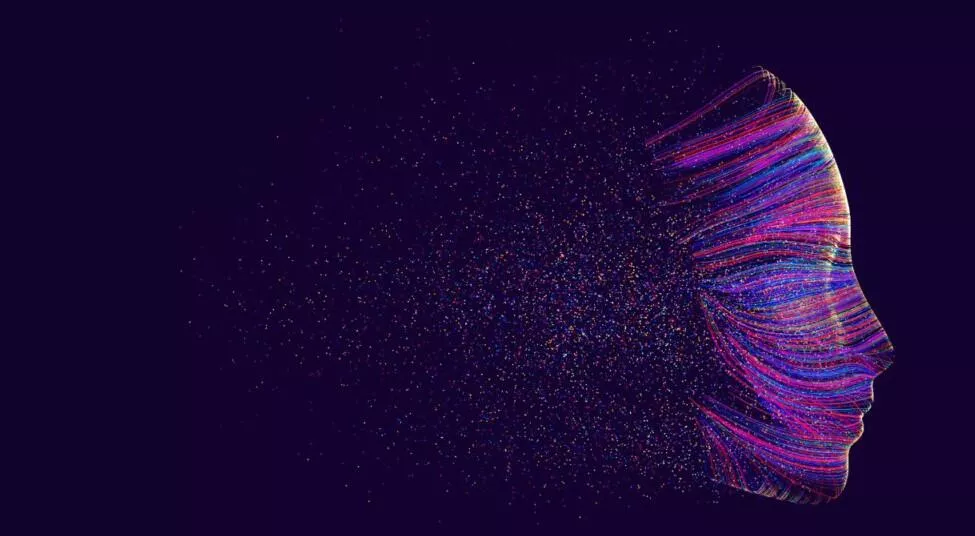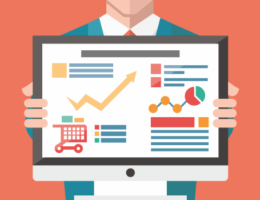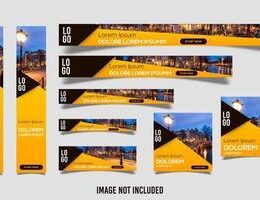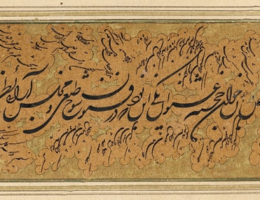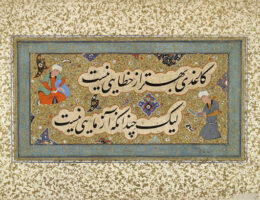IRAN ART EXHIBITION: WHAT IS ART OF DIGITAL GRAPHIC?
Digital art is an artistic work or practice that uses digital technology as part of the creative or presentation process. Since the 1960s, various names have been used to describe the process, including computer art and multimedia art. Digital art is itself placed under the larger umbrella term new media art.
After some initial resistance, the impact of digital technology has transformed activities such as painting, literature, drawing, sculpture and music/sound art, while new forms, such as net art, digital installation art, and virtual reality, have become recognized artistic practices. More generally the term digital artist is used to describe an artist who makes use of digital technologies in the production of art. In an expanded sense, “digital art” is contemporary art that uses the methods of mass production or digital media.
The techniques of digital art are used extensively by the mainstream media in advertisements, and by film-makers to produce visual effects. Desktop publishing has had a huge impact on the publishing world, although that is more related to graphic design. Both digital and traditional artists use many sources of electronic information and programs to create their work. Given the parallels between visual and musical arts, it is possible that general acceptance of the value of digital visual art will progress in much the same way as the increased acceptance of electronically produced music over the last three decades.
Digital art can be purely computer-generated (such as fractals and algorithmic art) or taken from other sources, such as a scanned photograph or an image drawn using vector graphics software using a mouse or graphics tablet. Though technically the term may be applied to art done using other media or processes and merely scanned in (from scanography), it is usually reserved for art that has been non-trivially modified by a computing process (such as a computer program, microcontroller or any electronic system capable of interpreting an input to create an output); digitized text data and raw audio and video recordings are not usually considered digital art in themselves, but can be part of the larger project of computer art and information art. Artworks are considered digital painting when created in a similar fashion to non-digital paintings but using software on a computer platform and digitally outputting the resulting image as painted on canvas.
Amidst varied opinions on the pros and cons of digital technology on the arts, there seems to be a strong consensus within the digital art community that it has created a “vast expansion of the creative sphere”, i.e., that it has greatly broadened the creative opportunities available to professional and non-professional artists alike.
IRAN ART EXHIBITION: Whilst 2D and 3D digital art is beneficial as it allows preservation of history that would otherwise have been destroyed by events like natural disasters and war, there is the issue of who should own these 3D scans – i.e. who should own the digital copyrights.
Visual artists turn ideas into visual representations that can convey a message, evoke emotion and resonate with an audience. Organizations employ these professionals to help increase brand awareness, create meaningful and impactful graphics and stay relevant to consumers. Graphic designers and digital designers use their artistic abilities and technical skills to deliver an organization’s message. In this article, we discuss the differences between graphic design and digital design, the characteristics of graphic design and digital design, possible careers for both types of designers and common deliverables for each.
What are the differences between graphic design and digital design?
The differences between graphic design and digital design lie in the types of visuals they create and the mediums they work with. The field of graphic design received an official title in 1922, long before the advent of computers and digital design. Graphic design began as a career creating art and images for printed materials.
With the advent of technology, graphic designers adapted to learn software and programs to transition their craft into a digital age, but their core responsibilities remain the same: creating static images to convey a message. Graphic designers apply drawing, sketching and design skills to create graphics for print and web pages. Graphic designers use strategies to enhance their work for different mediums by adjusting resolution, different color coding systems and printing bleeds.
Digital designers create graphics with motion and interactivity. Their work can include animation, interactive web pages and 2D and 3D designs. Digital designers rarely work with printed materials and focus on graphics for screens, including computers, tablets and mobile devices.
Characteristics of graphic design
IRAN ART EXHIBITION: Some of the key features of graphic design include:
Adherence to company standards
Graphic designers must adhere to a brand’s corporate design standards, which may include:
• Colors
• Typeface
• Logos
• Writing style
• Formatting
• Acceptable images
They have to work within these parameters to create designs that fit within a brand’s aesthetic, align with other marketing and communication materials and remain consistent with the brand’s voice and image.
Use of physical materials
In addition to creating images, logos and designs that appear on printed collateral, graphic designers can also design physical pieces to secure, transfer and showcase a organization’s materials. This can include:
• Envelopes
• Packaging
• Vehicle wraps
• Binding
• Product shapes, textures and weights
• Finishes
Characteristics of digital design
Digital design has several key characteristics that distinguish it from graphic design, including:
Interactivity
IRAN ART EXHIBITION: Digital designers create designs that users can experience and manipulate. This means the graphics incorporate art and design, as well as functionality. Digital designers must tailor these designs for a range of screen types and sizes and for a various purposes. For instance, digital designers may create the tracking screen for a workout on a fitness watch or a countdown to a concert on a musician’s home page.
Analytics
Digital designers have the benefit of tracking the success of their designs, unlike graphic designers. Using data and analytics allows digital designers to see which graphics perform the best using metrics such as:
• Likes
• Comments
• Shares
• Page views
• Click-through rates
• Downloads
With the availability of testing, digital designers can make design choices using real-time data about different design elements. Designers can employ A/B tests to compare the performance of two or more unique designs and incorporate the most successful versions.
What careers use digital design?
Digital design careers include:
User experience
User experience (UX) focuses on how a user interacts with a product or program. UX designers study the performance and characteristics of design elements to arrive at the most user-friendly, appealing version to provide clients. Designers analyze qualitative data, like product reviews and focus groups, and quantitative data, like performance metrics, to adjust and improve their designs.
User interface design
User interface (UI) design refers to the visual elements in UX design and can include:
• Layout
• Iconography
• User pathways
• Flow of information
IRAN ART EXHIBITION: The goal of UI designers is to optimize the ease of use and functionality of computer programs and other software, appliances, mobile apps and operating systems, smart watches and other technological objects.
Production art
Production artists work with film, art and other graphics to ensure the final stages of transfer and production go smoothly. They make edits to products, like cropping, color correction and retouching while working closely with the production crew, UX designers, animators and product developers.

Animation
Animators work with studios and other organizations to create animations and motion graphics. As more businesses build their digital presence, animators may find more job opportunities outside of traditional fields.
What careers use graphic design?
Graphic designers can work in the following areas:
Advertising and marketing agencies
IRAN ART EXHIBITION: Graphic designers play an important role in creating images that reflect a company’s personality and convey a particular message to consumers. Working for an ad agency allows graphic designers to work with a variety of clients, products and projects, which can be artistically rewarding. You may be a part of:
• Website design
• Logo creation
• TV and newspaper ads
• Direct mail campaigns
In-house marketing departments
Many large organizations have their own marketing departments that develop the company’s marketing strategies and run advertising campaigns. Graphic designers in these departments can specialize in a single brand, learning the company’s voice and vision and translating it into visual concepts that result in increased sales. In-house teams can work on the following projects:
• Company branding
• Internal communications materials
• Websites
• Social media profiles
• Presentation materials
Freelance
Graphic designers may choose to work as freelancers, finding their own clients, setting their own rates and choosing which projects to work on.
Deliverables for digital design vs. graphic design
The deliverables for digital designers and graphic designers can be similar. Both designers have the common goal of representing an organization or brand in a way that is engaging and memorable to develop brand awareness.
IRAN ART EXHIBITION: Graphic design deliverables include:
• Advertisements for television, newspaper, magazines and the internet
• Magazine layouts and spreads
• Corporate reports
• Brochures
• Logos
• Business cards
• Letterhead
• Direct mail
Digital designers may produce:
• Banner ads
• UX wireframes or layouts
• Animated graphics
• Interactive elements for web pages and online and mobile advertisements
Benefits of working as a designer
IRAN ART EXHIBITION: Graphic designers and digital designers provide valuable services to their clients. These careers also offer the following benefits:
• Using your talents: Graphic designers and digital designers make a living using their passion for art.
• Being creative: Design work provides an opportunity to be creative and imaginative.
• Working in different environments: Almost every company has design needs, so you can find the right fit for you, whether it’s in the marketing department of a healthcare company, a digital marketing agency or selecting clients as a freelancer.
